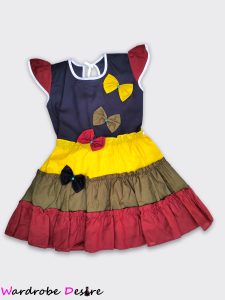What was once considered black culture’s uniform is now a prominent trend worldwide; this is streetwear. In this article, the author looks at the origins, some significant changes and moments as well as the state of affairs in streetwear in 2024. Staying true to the culture within the framework of going global, marrying a super-comfortable wedding kurta for men as the defining detail, streetwear is an embodiment of tradition and progress, as well as a space for inclusiveness.
Streetwear’s Countercultural Beginnings
Street wear is recognizable as a phenomenon associated with subcultures of the late twentieth century. Street culture and sport such as skateboarding and surfing in Southern California in the mid 70s birthed other brands like Stüssy that merged leisure wear and personality. In the 1980s hip-hop contributed to the urban culture, so the brands such as Cross Colours and FUBU became the epitome of street wear.
As globalized street wear continued apace across the Atlantic, the Harajuku district of Tokyo was to have a dramatic influence in re-contextualizing the apparel. A Bathing Ape (BAPE) introduced more prints and forms of camouflage that are favourites today in Western markets with street and luxury appeal. Grime music of the UK made tracksuits and sneakers popular causing a raw but genuine street aesthetic. It only took until the 1990s for these movements to fixate into one single continuum.
Street wear Meets the Mainstream
The early of the decade saw luxury brands fully endorsing street wear clothes. The unique February 2017 partnership between Louis Vuitton and Supreme can be regarded as a precedent, as it aimed to redefine exclusivity. A new effort by streetwear was initiated fifteen years ago and high fashion brands such as Gucci and Balenciaga supported the movement with their designs which included hoodies, sneakers, and graphic tees.
Celebrities such as Kanye West and Virgil Abloh from Yeezy and Off-White, respectively, have turned streetwear into a luxury brand. Social media took it to another level making streetwear go from a symbol of youth subculture to a status symbol. Luxury streetwear continues to be a defining cultural segment in 2024 as the market is duly won for its exclusivity and ethnic integration.
Street wear in India: A Cultural Renaissance
Street wear’s relationship with tradition forms part of an identity, making it a part of India’s fashion culture. New kids on the block include Jaywalking and NorBlack NorWhite and like many of the best Indian designers, they combine contemporary cuts with classic prints like bandhani and ikat. Therefore, although, streetwear in India may appear similar to its counterpart in the West, it seldom lacks cultural narrative in its textiles.
A good example of this is the wedding kurta for men which has evolved from the traditional tight fitting dress with flashy colourful embroidery and featuring street wear styled layering. Pairing kurtas with sneakers or bomber jackets have now become a fashion staple with a nice blend of contemporary and ethnic looks. The idea to reinvent traditional ethnic wear is consistent with the contemporary trend for fusing different cultures which prepares India for shaping the global street trend.
Trends Driving Streetwear in 2025
With sustainability ft on the line, street wear is steadily progressing to be the new generation of fashion. Sustainability, recycling and recycling, and open sourcing have become standards as companies move to cater for the increasing social awareness towards the fashion industry. Using natural fibres and artisanal skills Indian designers are embracing sustainable production with less compromising on culturally relevant identity.
At the same time, it is changing what street wear means – and technology is central to it. Intelligent textiles, avatars in the metaverse, and non-fungible token (NFT) releases are no longer niche topics, attracting mainly Generation Z buyers. It makes streetwear more accessible claims it creates an environment of engagement this augments the culture into new realms.
The Challenges of Streetwear in 2025
Thus, street wear remains at the top, but as the world demands more and more, it opens new obstacles that define its future. This remains the most significant criticism mainly because commerce and profit have taken over a culture that used to be anti-establishment. While some of these celebrations were initially driven by cultural activities, they have of late heavily transformed into economic ventures. This shift always leads to spectators who believe that streetwear has lost its character.
Still, another problem is stock proliferation that feeds off the secondary markets of luxury goods. The era of different collaborations and once loved and cherished low-key releases expresses exclusivity. Sneakers, T-shirts, hoodies and, even accessories are launched and experience a few minutes sell out only to be sold on resale websites at very high prices. This practice erodes the level of access and annoys die-hard enthusiasts of the culture.
Industry issues also under the environmental umbrella affect the industry. The new generation of fast fashion especially street wear is infamous for contributing to environmental pollution and overproduction. It unfortunately seems like brands are only getting started with their sustainability transitions, and scale is a challenge.
Smaller brands that sell their products independently cannot always afford to practice sustainability in the ways that they present themselves, which creates a disparity between stated intent and action.
The Indian Perspective: Streetwear’s Local Challenges
In India, casual wear faces unique hurdles. The concept of urban casualwear often clashes with cultural expectations of formal and traditional clothing, particularly in smaller cities and rural areas. However, the rise of digital platforms has helped bridge this gap, exposing younger audiences to global streetwear trends.
Counterfeiting remains another issue in the Pakistani and Indian market. Popular streetwear brands frequently see replicas flooding markets, diluting their value and threatening their existence. However, local brands are combating this through storytelling, limited collections, and emphasizing their roots in Indian craftsmanship.
Streetwear’s Role in Shaping Cultural Identity
Another testament to the versatility of the trend is its use as a platform for cultural and individual expression. This has emerged clearly evident in the Indian context, where traditional apparel is gradually being reinvented in a contemporary type way. One of the best examples of the procedure, in which streetwear turns cultural clothing into experimental outfits, is the wedding kurta for men.
Modern influences give the kurta a contemporary touch; pinstripes and checkers intermingled with fuller figures and urban accouterments in sneakers and chains. Besides subverting the structural construct of cultural covering of the body, the reinvention also points to the relativistic approach that now characterizes Indian fashion to global trends.
The Future of Street wear
Moving forward, things are expected to go up as the trend of fashion persists. The use of AI, the augmented reality concept, and the metaverse can be seen as the future of the audience-brand relationship. New virtual collections are appearing as an experimental niche of apparel that combines game elements with modern fashion with the right to wear unique digital items in the virtual space.
It also shows that sustainability will continue to be an important issue. Models of circular fashion where used clothes are reclaimed and turned into new ones are anticipated to pick up. This is in close seasonal agreement with the young generation consumer who GetWidthbig is drawn more to products that are both fashionable and support environmentally friendly production.
Being a global hub for manufacturing and a country full of artistic and smart designers, India is soon going to take a more significant position in streetwear’s evolution. Some of the Indian brands of streetwear clothes are not copying what’s trending internationally; they are actively proposing an Indian aesthetic to the globe. That is why, as the country continues to grow as a force in fashion, things such as the men’s wedding kurta can become commonplace on a global level.
Conclusion
Adaptability is another inevitable factor to talk about when discussing the development of street wear. Including distilling the philosophy of rebellious street culture to its current status of internet fueled global phenomenon, street wear is another lens through which the dynamics of society can be observed. By 2024 sustainability, integration of the disadvantaged, and incorporation of technology will make it even more relevant fixing new barriers for the fashion industry.
With India opening its arms to Street wear and reinventing it with its rich cultural influence the next chapter of the movement will indeed be one of creativity and confluence. From the return of men’s wedding kurta to embracing smart fabrics, street wear in 2025 has all the signs of embracing diverse international flavors yet remaining grounded.




